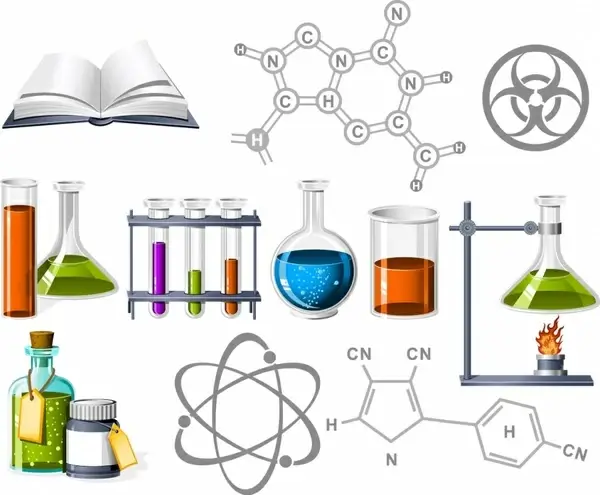Chemistry the science and art of matter .
The science of chemistry is not just about discovery. It is also, and especially, about creation. It is an art of the complexification of matter. To understand the logic of the latest discoveries in Nano chemistry, we have to take a 4-billion year leap back in time

Chemistry is a science that involves more than only discovery. Additionally and particularly, it is about creativity. It is a form of material complexity art. We must travel back in time by 4 billion years in order to comprehend the reasoning behind the most recent advances in nanochemistry.
Chemistry has a crucial role to play because of its position within the natural sciences and the body of knowledge as a whole, as well as because of its economic significance and pervasiveness in daily life. But because it is so common, we frequently overlook it or even completely neglect to acknowledge it. Although chemistry doesn't want to draw attention to itself, it is responsible for some genuinely amazing developments, including medical discoveries, space exploration, and technological marvels. It is vital to humanity's ability to access food, medicine, clothing, shelter, energy, raw materials, transportation, and communications. In addition to providing materials for physics and industry, it also gives biology and pharmacology models and substrates, as well as qualities and processes for the sciences and technology.
:max_bytes(150000):strip_icc()/atom-artwork-160936095-58a8f5683df78c345b8e53be.jpg)
Without synthetic materials, there would be no cellphones, computers, or films in a world without chemistry. In addition, there would be no paper, newspapers, books, glue, or art in a world without soap, shampoo, toothpaste, or contraceptive pills.
And we must be mindful of the fact that chemistry enables forensic scientists to analyse samples taken from crime scenes and quickly identify the perpetrators, as well as revealing the molecular underpinnings of foods that please our palates. It also enables art historians to delve into the secrets behind paintings and sculptures in museums.
Chemistry is the study of matter and its changes. Physics studies the laws of the universe, and biology studies the laws of the living world. The purest form of expression is life. Our power to act with, alter, and control material phenomena as well as our comprehension of them all depend on chemistry.
For almost 200 years, molecular chemistry has created an enormous variety of ever-more complex molecules and materials. Since the synthesis of urea in 1828, which ignited a veritable revolution by showing that it was possible to create a "organic" molecule from a mineral component, until the synthesis of vitamin B12 in 2006, a quest that had begun in 1948, this discipline hasn't stopped asserting its dominance over structure and the transformation of material.
The molecule as the horse of Troy
The enormous field of "supramolecular chemistry," which is above and beyond molecular chemistry, is more interested in what happens between molecules than it is in what happens within them. Understanding and controlling how molecules interact, change, and bind to one another while disregarding other partners is the goal of this field of study. Emil Fischer, a German who won the Nobel Prize in Chemistry in 1902, used the metaphor of a lock and key. Today, the term "molecular recognition" is used.
The importance of these molecular interactions is most evident in biology, where protein building blocks come together to form haemoglobin, white blood cells identify and eliminate foreign objects, the AIDS virus locates its host and takes control, and the genetic code is transmitted by reading and writing the protein base alphabet. The tobacco mosaic virus provides a striking illustration of how "self organisation" occurs when no fewer than 2130 small proteins come together to build a helical tower.
A chemist is enticed to duplicate or develop new procedures to generate new molecular architectures with a variety of applications because he finds the efficacy and beauty of these natural events to be so fascinating. Why not consider molecules that, for example, in gene therapy, can carry a DNA fragment to the centre of a target? These molecules would act as "Troy horses" and break through allegedly impenetrable barriers, such as cell membranes.
Many scientists from all over the world are steadily making 'designer' supramolecular structures. They watch as randomly arranged molecules can find and recognise one another before gradually coming together spontaneously but under strict control to form the ultimate supramolecular structure.
Thus, the concept of "molecular programming"—or evoking and controlling the development of supramolecular assemblages—was born, inspired by occurrences that nature has shown us. The fundamental building blocks are created by the chemist (molecules with certain structural and interactional features), who then aplies the "cement" (assembly code) to join them.
As a result, a superstructure forms naturally. The synthesis of self-organizing molecular building blocks is far easier than the synthesis of the finished structure. This line of research opens up a wide range of possibilities, particularly in the area of nanotechnology. Rather than producing nanostructures, we allow them to self-assemble by self organisation, transitioning from fabrication to self-fabrication.
Even more recently, 'adaptive' chemistry has developed, where the system chooses its own components from the available building blocks in order to form itself and develops the capacity to modify its objects to the needs of the environment. There is a bit of a Darwinian flavour to this type of chemistry, which I refer to as "dynamic constitutional chemistry"
The Big Bang, the first explosion, occurred at the beginning when physics predominated. Then, at more comfortable temps, came chemistry. As life began to arise on our planet 3.8 billion years ago, particles created atoms, which joined to create increasingly complex molecules. These molecules, in turn, gathered together in aggregation and membranes to give rise to the earliest cells.
Under the weight of knowledge, the unfolding Universe is pushing the development of matter towards increasing complexity through self-organization, from divided matter to condensed matter to organised, living, and thinking matter. Chemistry's mission is to identify the mechanisms that lead to self-organization and to map the processes that go from inert matter through a primordial development that was exclusively chemical to the emergence of life, and then to living and eventually to thinking matter. In this sense, it provides a chance to examine the past, delve into the present, and forge connections with the future.
Chemistry expresses its creative force, its capacity to generate new molecules and materials that had never existed before they were produced by the rearrangements of atoms into unique and infinitely different combinations and structures, through its subject matter (the molecule and material). The versatility of the forms and functions of chemical objects makes chemistry somewhat similar to painting. The chemist imprints matter with his creative works in the role of an artist. Similar to how a sculptor, composer, or novelist bends stone, sounds, and words to create something new, a chemist develops novel molecules, novel materials, and undiscovered qualities from the elements that make up matter.

Chemistry has a unique ability to not only find, but also to invent and, most importantly, to create. Not only should The Book of Chemistry be read, but also written. The Chemistry score must be composed as well as played.
Lehn, Jean-Marie
Supramolecular scientist Jean-Marie Lehn, emeritus professor at the University of Strasbourg (France), shared the 1987 Nobel Prize in chemistry with Donald Cram and Charles Pedersen. Jean-Marie Lehn, who is a member of the French Academy of Sciences and an honorary professor at the College of France, founded the Institute of Supramolecular Science and Engineering.












